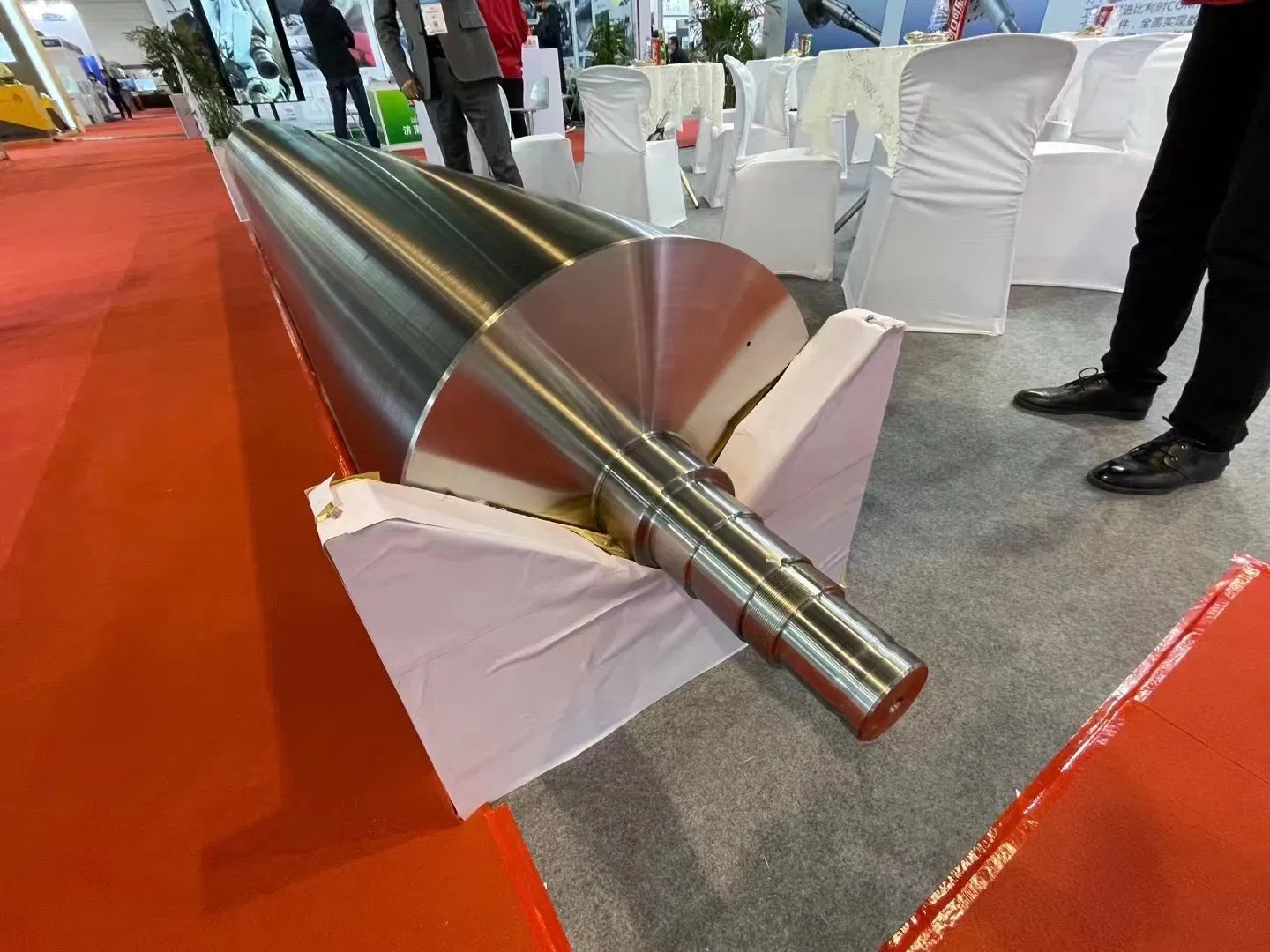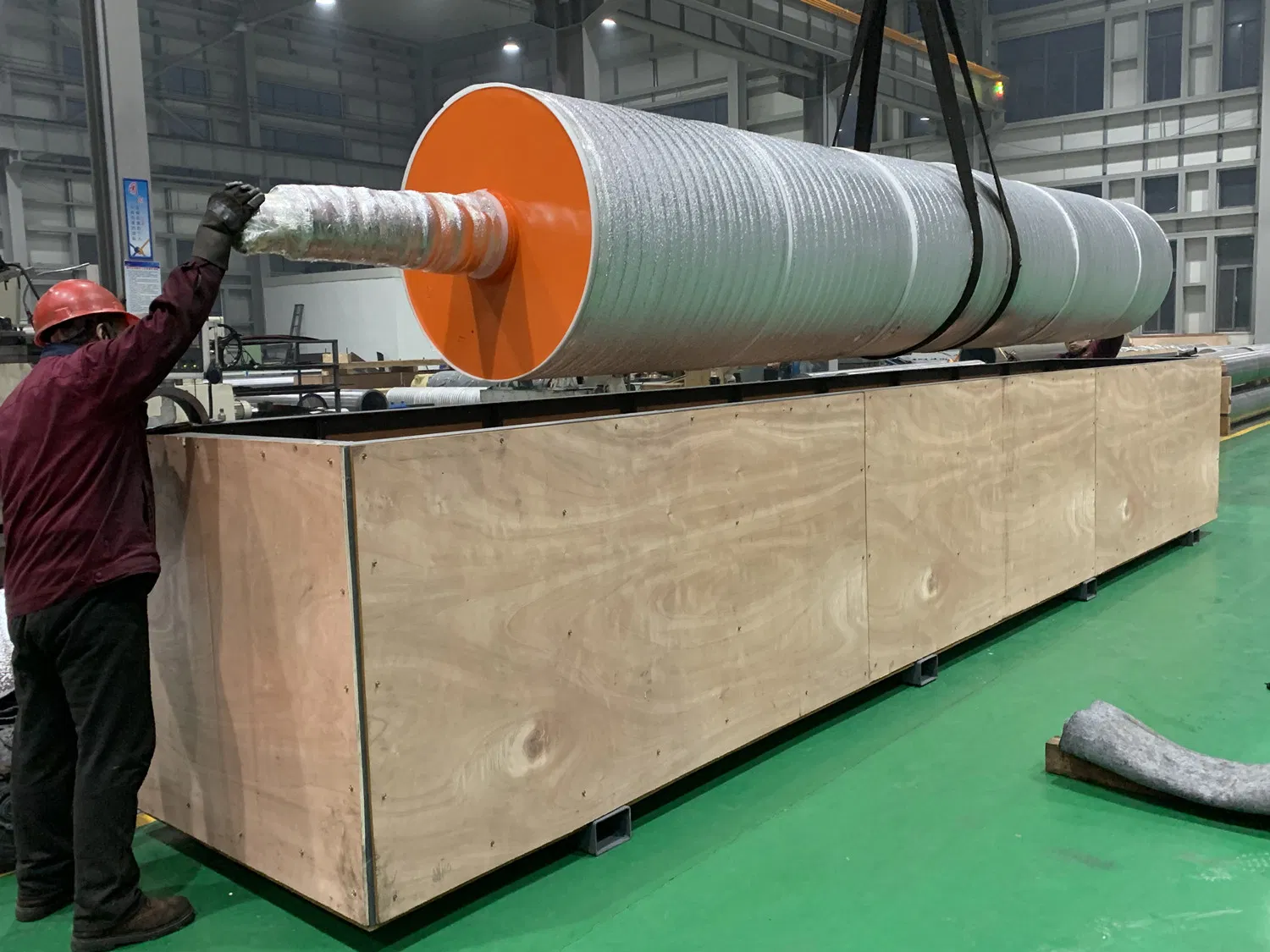Have you ever held a crisp sheet of paper and considered the incredible journey it took from a slurry of pulp to the finished product in your hands? It’s a process of immense speed, pressure, and precision. At the very core of this industrial marvel lies a series of components that are, to be honest, the unsung heroes of the entire operation: the paper machine rolls. These massive, meticulously engineered cylinders are responsible for forming, pressing, drying, and finishing the paper web. Their performance directly dictates the quality of the final product, the efficiency of the machine, and ultimately, the profitability of the mill. This is why the selection of a Paper machine roll manufacturer is one of the most critical decisions a mill's management can make.
Frankly speaking, not all manufacturers are created equal. The difference between a premier supplier and an average one can mean the difference between seamless production and costly, unscheduled downtime. This guide is designed to pull back the curtain on the world of paper machine rolls, giving you the insights needed to evaluate and choose a manufacturing partner who can help propel your operations forward.
The Anatomy of a Paper Machine Roll: More Than Just a Cylinder
To truly appreciate the importance of a quality manufacturer, it’s essential to understand the diverse and demanding roles these components play. A modern paper machine is a symphony of interconnected sections, and each section relies on specialized rolls to perform its function flawlessly. A failure in one roll can have a cascading effect down the entire production line.
Let's break down the primary types of rolls and their functions. It's worth noting that the terminology and specific configurations can vary, but the fundamental principles remain the same.
Forming Section Rolls
This is where the magic begins. A dilute slurry of pulp (over 99% water) is introduced onto a moving fabric or wire mesh. The rolls in this section are crucial for dewatering and creating the initial, fragile paper web.
- Breast Roll: Located at the beginning of the forming section, it supports the forming fabric as the pulp slurry is deposited.
- Forming Rolls & Table Rolls: These help in the initial, gentle dewatering process through gravity and suction.
- Couch Roll: This is a large, often suction-perforated roll at the end of the forming section. Its primary job is to transfer the delicate paper web from the forming fabric to the press section. Precision here is paramount to avoid web breaks.
Press Section Rolls
After leaving the forming section, the paper web is still incredibly moist and fragile. The press section’s job is to mechanically squeeze out more water, which is far more energy-efficient than evaporating it. This process also compacts the sheet, improving its strength and surface properties.
- Suction Press Rolls: These have a drilled shell with an internal suction box to pull water away from the felt and the paper sheet.
- Grooved & Blind-Drilled Rolls: These rolls have surface patterns (grooves or non-through holes) that create channels for the pressed water to escape, preventing it from being reabsorbed by the sheet.
- Smooth Press Rolls: Often working in a nip against a suction or grooved roll, these provide a smooth surface for pressing.

Dryer Section Rolls
This is typically the longest section of the paper machine. The paper web meanders over, under, and around a multitude of steam-heated cast iron cylinders, known as dryer cans. The goal is to evaporate the remaining water in a controlled manner. The thermal efficiency and surface uniformity of these rolls are critical for consistent drying without damaging the paper.
Calender and Finishing Rolls
Once dried, the paper sheet passes through a series of nips formed by calender rolls. This final pressing operation imparts smoothness, controls thickness (caliper), and improves gloss. The rolls here must have an exceptionally fine surface finish and be perfectly uniform in dimension and temperature.
Understanding this complexity makes it clear: you aren't just buying a steel cylinder. You are investing in a piece of precision equipment that is fundamental to your entire process. This is why a deep dive into a manufacturer's capabilities is so important.
Key Qualities of a Premier Paper Machine Roll Manufacturer
When you begin your search, it's easy to get bogged down in quotes and lead times. However, the most successful partnerships are built on a foundation of technical excellence and proven capability. In my experience, focusing on the following areas will help you distinguish the leaders from the laggards.
Material Science and Engineering Expertise
The choice of material for a roll's body and its cover is a science in itself. A top-tier manufacturer will have deep expertise in metallurgy and polymer science. They should be able to recommend the ideal materials based on your specific application—the type of paper you produce, your machine's speed, and the chemical environment.
- Roll Body Materials: This can range from traditional cast iron for dryer cans to forged steel for highly-loaded press rolls, and even advanced composite materials for lightweight, high-performance applications.
- Roll Coverings: The cover is the interface with the paper sheet. Materials like rubber, polyurethane, and advanced composites are common. The right cover compound affects water removal, sheet release, and wear resistance. A manufacturer should be able to discuss durometer (hardness), chemical resistance, and thermal stability in detail.
- Coatings: For certain applications, specialized coatings like chrome or tungsten carbide are applied to enhance wear resistance and surface properties.
Precision Manufacturing and Technology
The term "precision" is not used lightly here. We're talking about tolerances measured in microns. For high-speed paper machine rolls, any imperfection can lead to vibrations, barring, and poor paper quality. Look for a manufacturer with state-of-the-art CNC grinding and machining equipment. Key indicators of precision include:
- Dynamic Balancing: All rolls operating at speed must be dynamically balanced to exacting standards (e.g., ISO G1.0). Improper balancing is a primary cause of vibration and premature bearing failure.
- Grinding and Crowning: Rolls are not always perfectly cylindrical. They are often ground with a specific "crown" or profile to compensate for the deflection that occurs under massive operational loads. The ability to calculate and execute these complex profiles is a hallmark of an expert manufacturer.
- Dimensional Accuracy: Consistent diameter, concentricity, and runout are non-negotiable. Ask potential suppliers about their quality control processes for verifying these critical dimensions.
Customization Capabilities
No two paper machines are identical. Whether you are upgrading an existing machine or designing a new one, you will likely need custom paper machine rolls tailored to your specific needs. A flexible and innovative manufacturer will work with you as a partner, providing engineering support to design rolls that optimize your process. This could involve changing a roll's diameter, modifying its internal structure for better heating or cooling, or developing a novel cover compound for a challenging application.

Beyond the Sale: Maintenance, Service, and Long-Term Partnerships
The relationship with your roll supplier shouldn't end when the component is delivered and installed. The lifecycle of a paper machine roll involves periodic maintenance and service to ensure it continues to perform at its peak. A forward-thinking Paper machine roll manufacturer understands this and offers comprehensive support.
Roll Grinding and Reconditioning
Over time, roll surfaces wear down and can become damaged. Regular regrinding is necessary to restore the correct profile and surface finish. A good supplier will not only manufacture new rolls but also have the capability to service and recondition your existing ones. This is a critical aspect of effective paper mill roll maintenance. They should be able to provide detailed inspection reports before and after service, documenting wear patterns and the corrections made.
On-Site Services and Technical Support
What happens when you have a problem? Can you get an expert on the phone or, if needed, at your mill? The best manufacturers offer on-site technical support for installation, troubleshooting, and performance analysis. They can help diagnose issues like barring, vibration, or poor dewatering, and their insights can be invaluable. This level of support transforms a simple supplier into a true operational partner.
Many experts agree that the value of this support network often outweighs small differences in the initial purchase price. A roll that is poorly installed or incorrectly diagnosed can cost you far more in downtime than you saved on the initial purchase.
The Financial Equation: Balancing Cost, Quality, and ROI
Of course, cost is always a factor. However, it's crucial to look beyond the sticker price and consider the Total Cost of Ownership (TCO). A cheaper roll might save you money upfront, but what are the hidden costs?
Consider this: a higher-quality roll from a reputable manufacturer, while potentially more expensive initially, can deliver a significantly better return on investment (ROI) through:
- Reduced Downtime: Superior materials and manufacturing precision lead to longer service life and fewer unexpected failures. Every hour of unscheduled downtime on a paper machine can represent tens of thousands of dollars in lost production.
- Improved Paper Quality: A perfectly uniform roll produces a more consistent paper sheet, leading to fewer rejects and a more valuable final product.
- Lower Energy Consumption: In the press section, a more efficient roll removes more water mechanically, reducing the steam required in the dryer section—a major source of energy consumption.
- Longer Maintenance Intervals: Durable covers and robust construction mean that rolls can run longer between regrinds, saving on maintenance costs and maximizing production time.
Frankly speaking, a cheap roll that fails prematurely or requires constant attention is one of the most expensive "bargains" a mill can invest in.
Making the Right Choice for Your Mill's Future
Choosing a paper machine roll manufacturer is a strategic decision that reverberates throughout your entire operation. It's an investment in quality, reliability, and efficiency. By looking beyond the price tag and focusing on technical expertise, manufacturing precision, customization capabilities, and long-term support, you can forge a partnership that pays dividends for years to come.
The right rolls are the silent, spinning heart of your paper machine. By partnering with a world-class manufacturer, you ensure that heart beats strong and steady, driving your mill towards a future of enhanced productivity and superior quality.
For more detailed information, please visit our official website:Paper machine roll manufacturer
About the author: John Carter is a veteran mechanical engineer with over 25 years of experience in the pulp and paper industry. Specializing in paper machine optimization and component lifecycle management, he has consulted for mills across North America, helping them enhance efficiency and product quality. John is passionate about the intersection of traditional manufacturing and modern material science.


